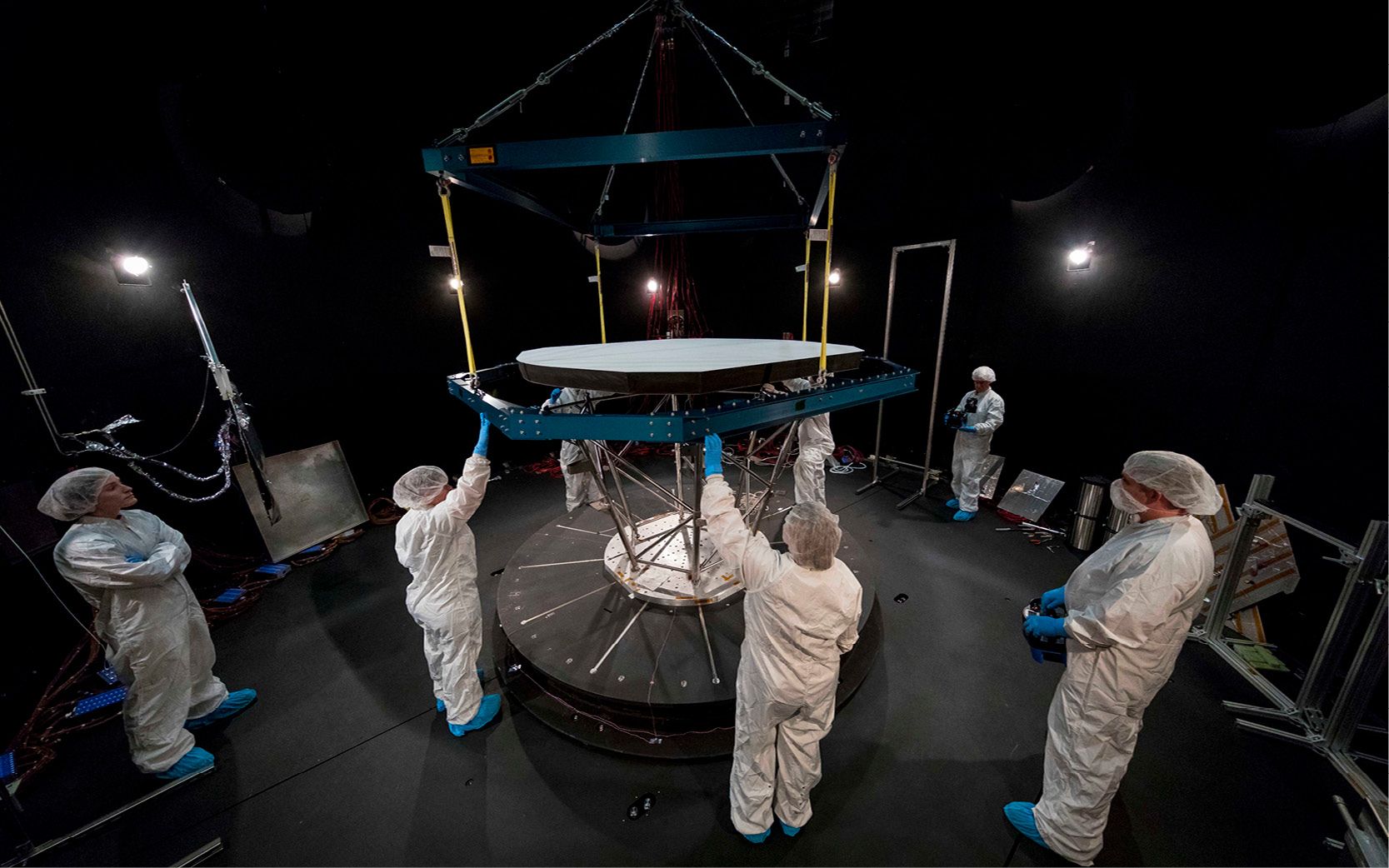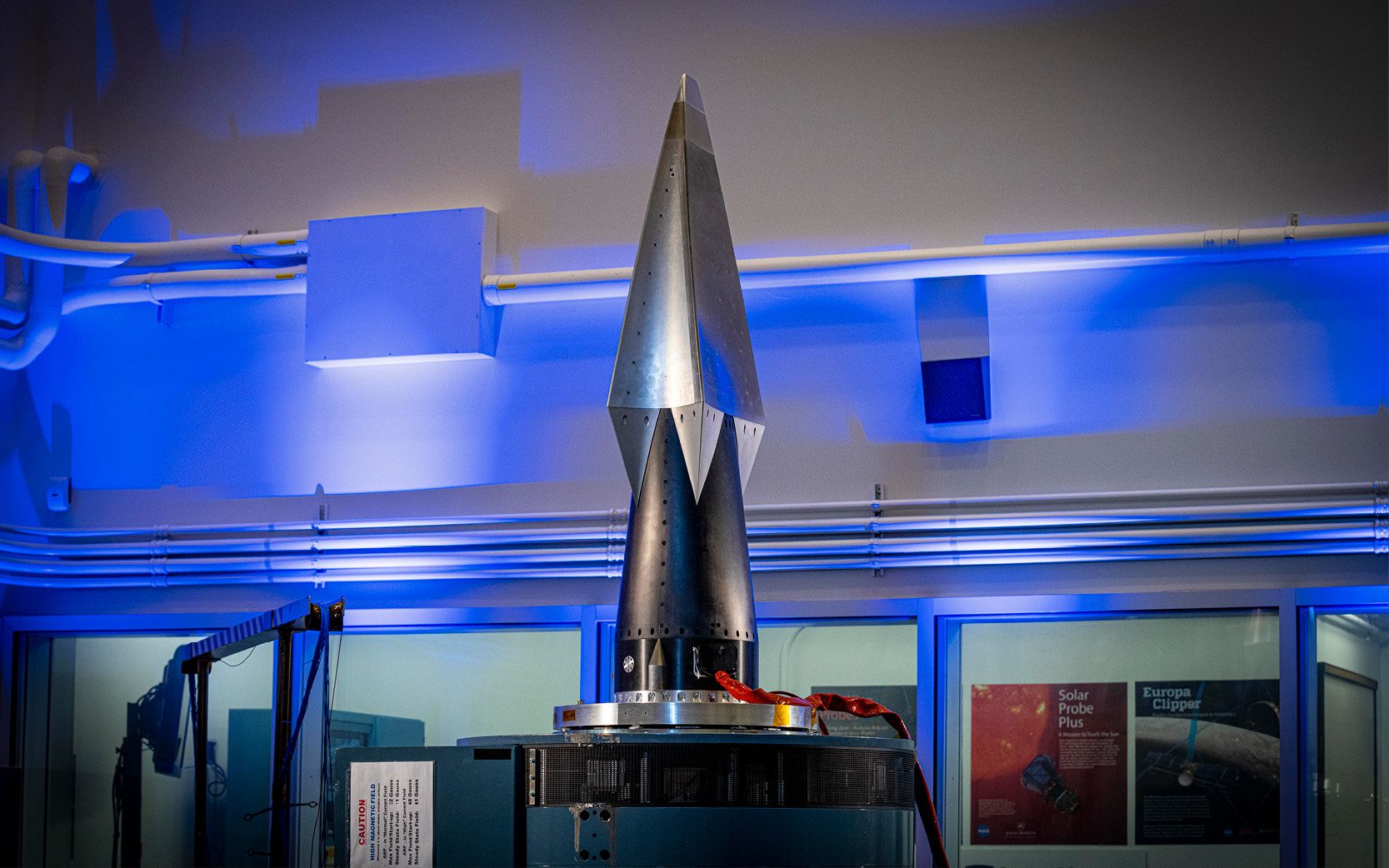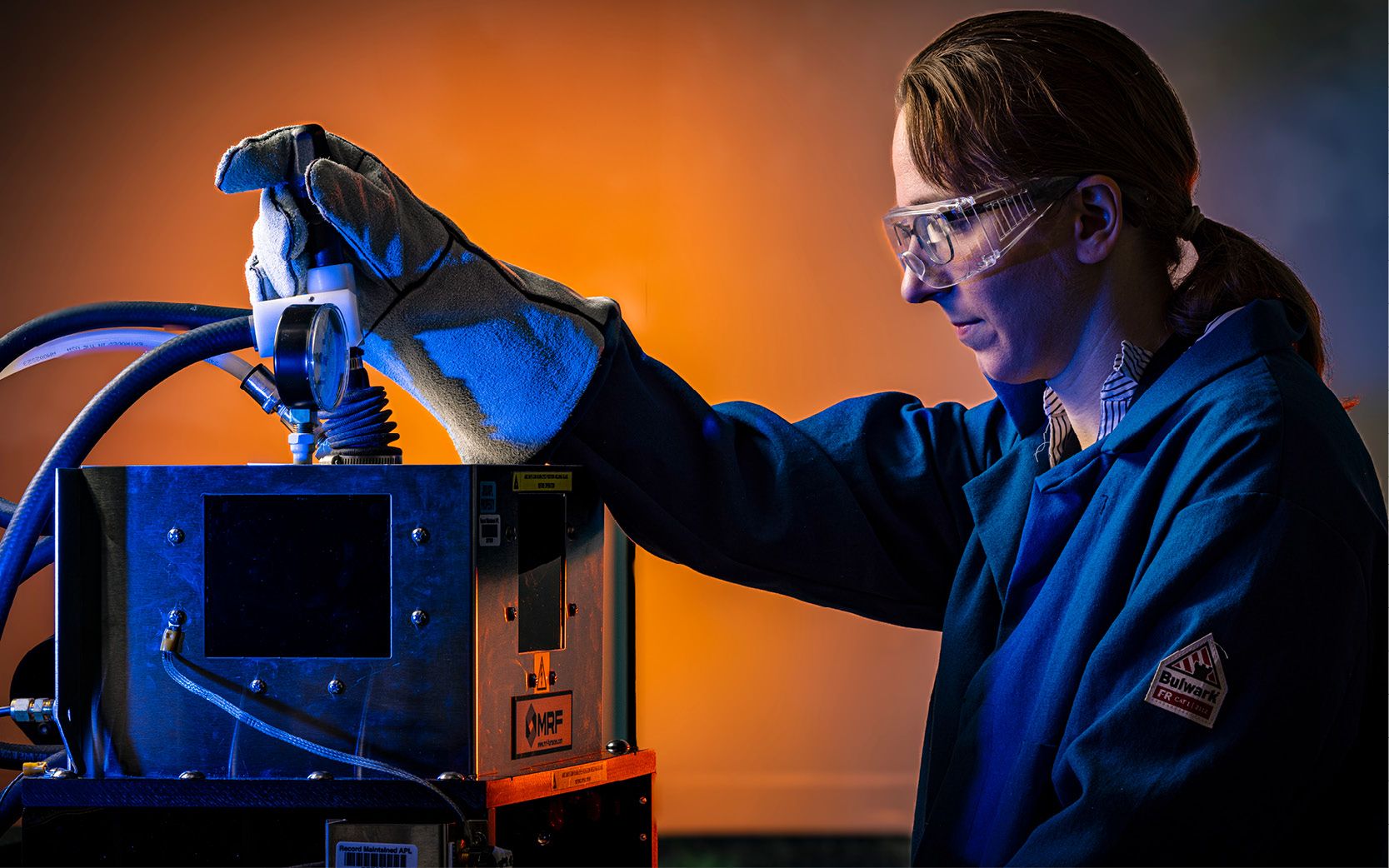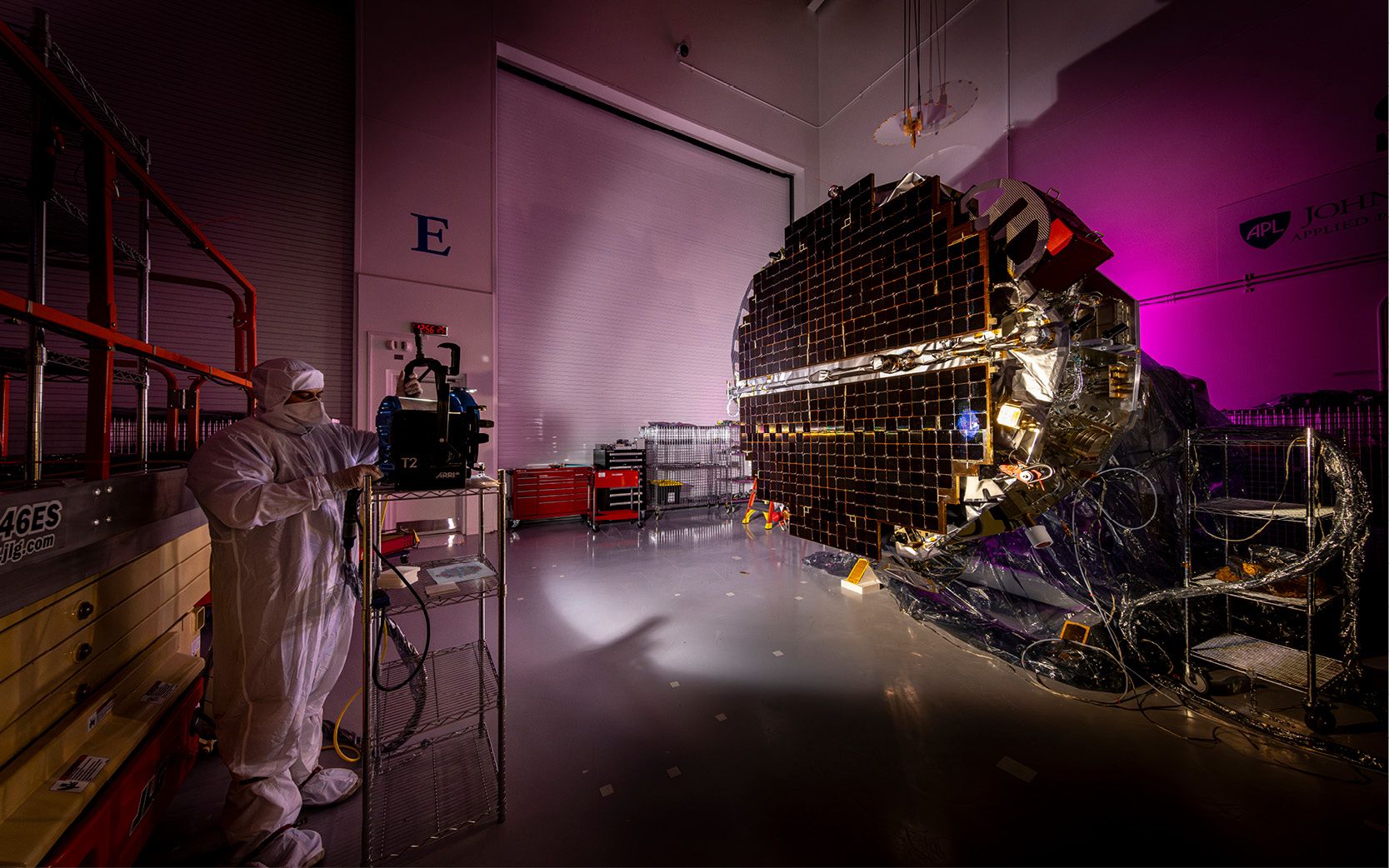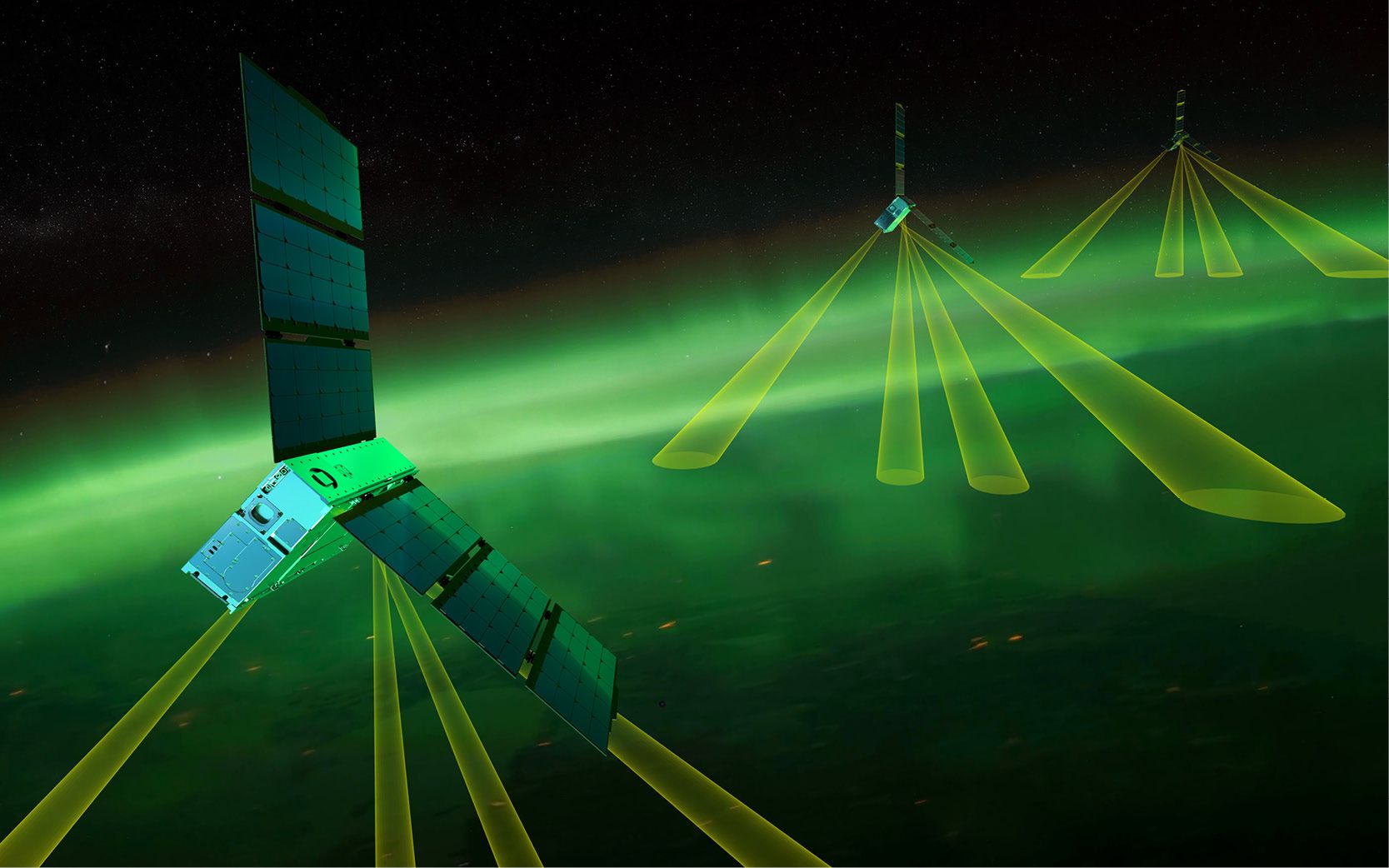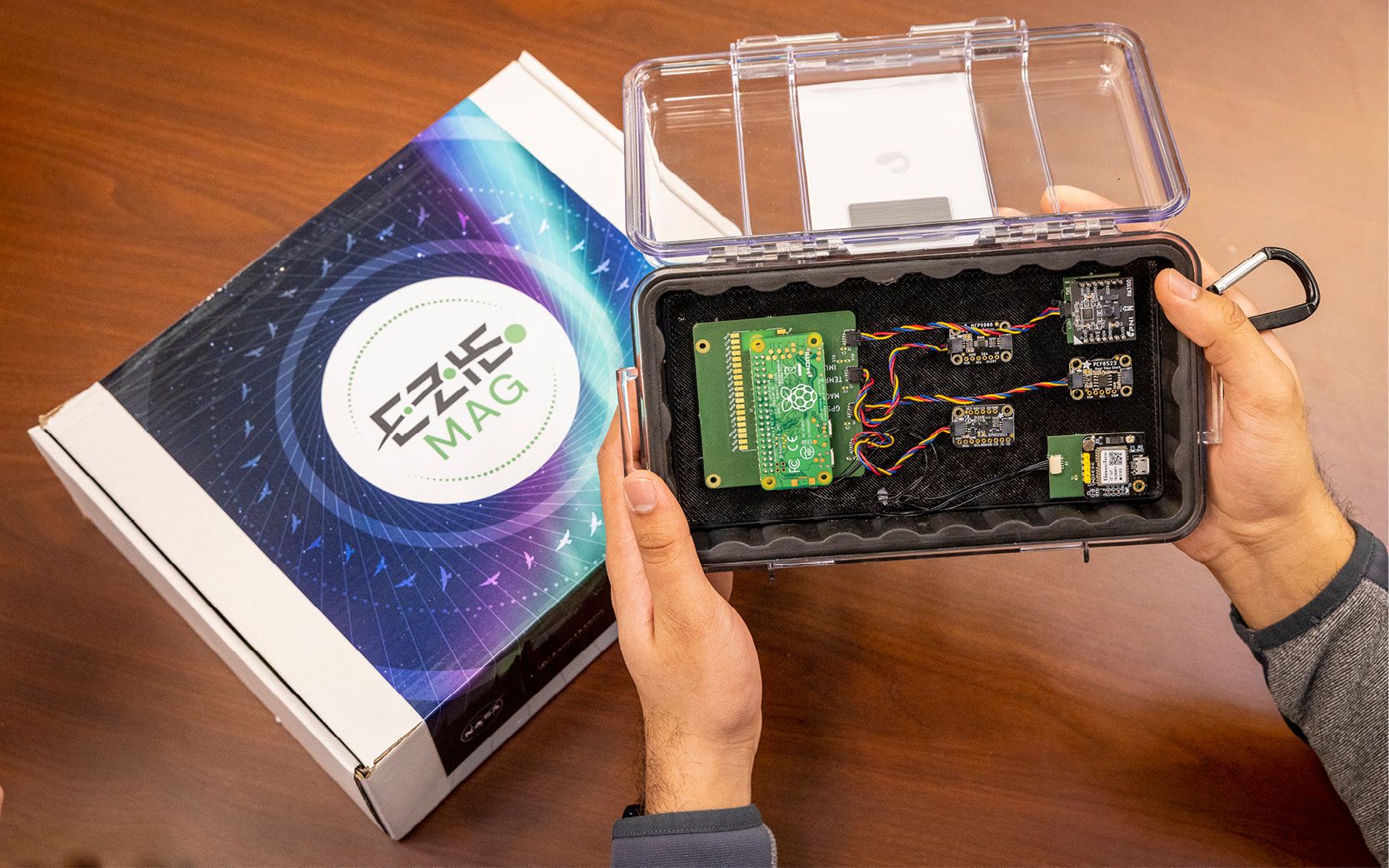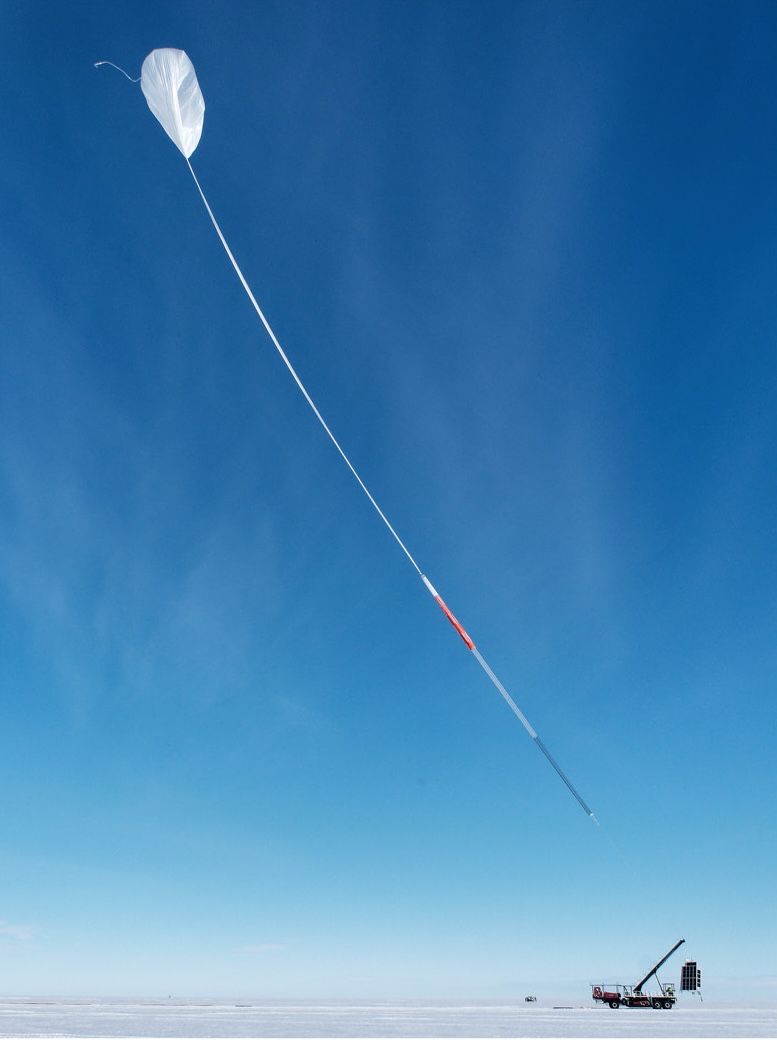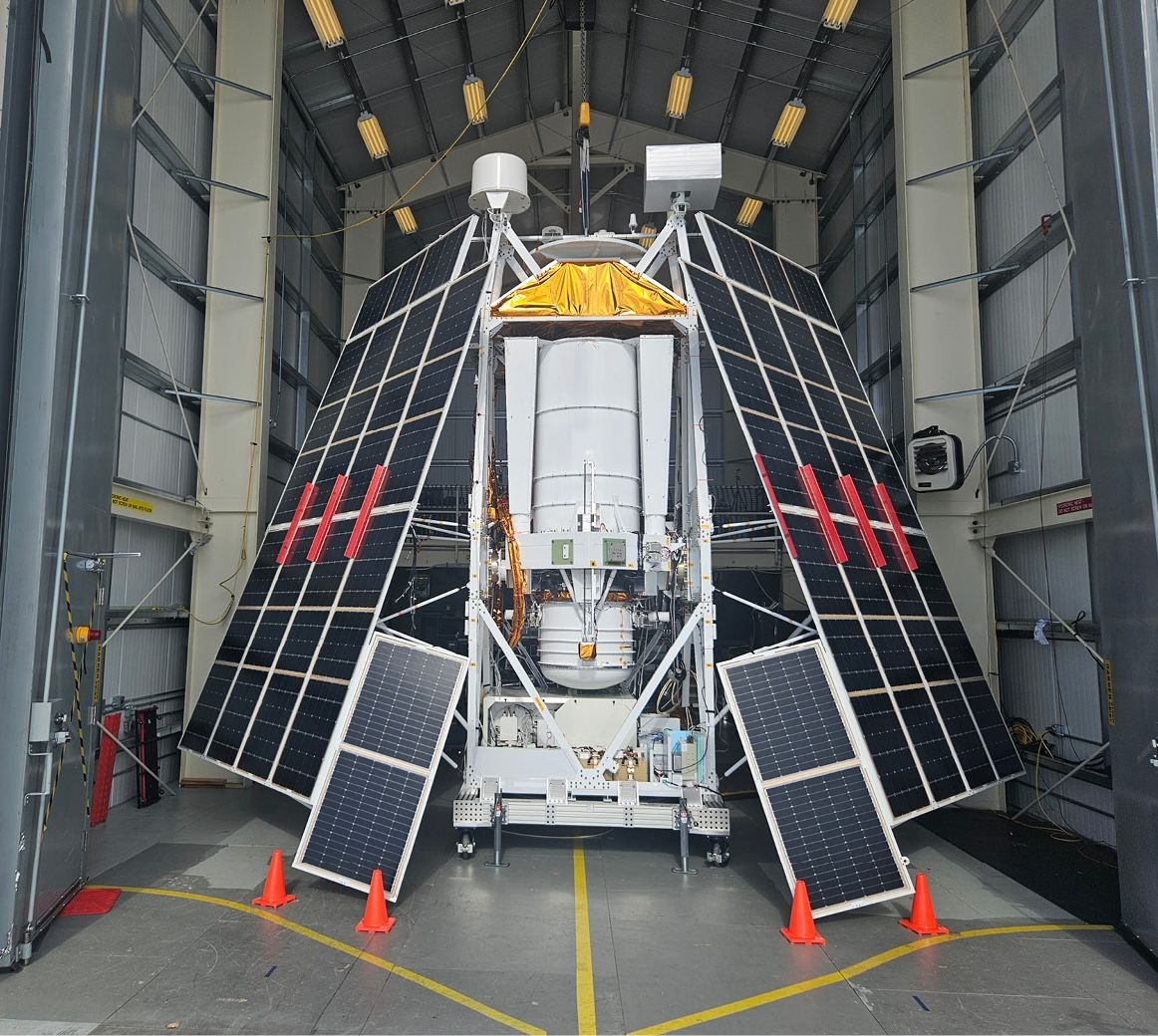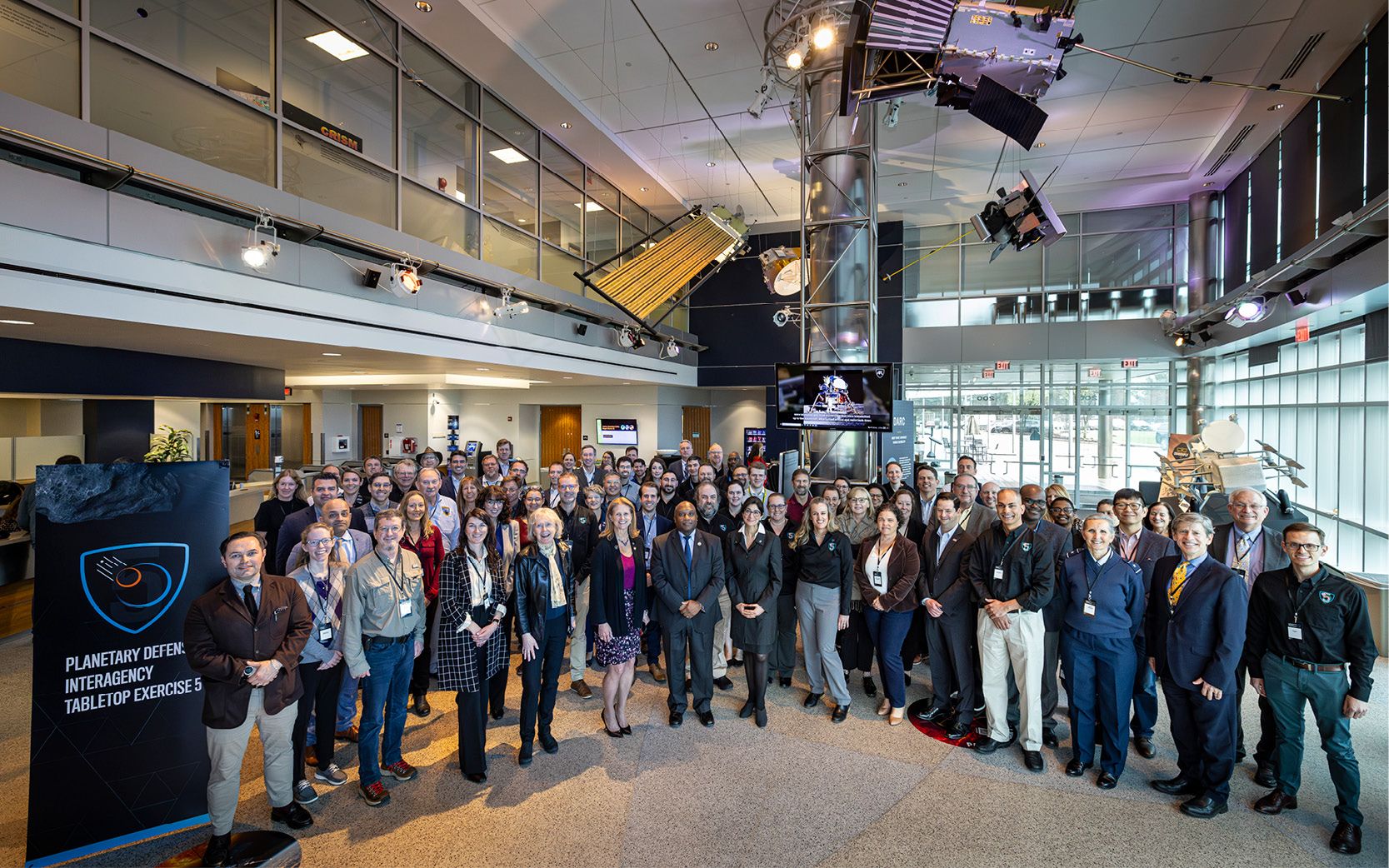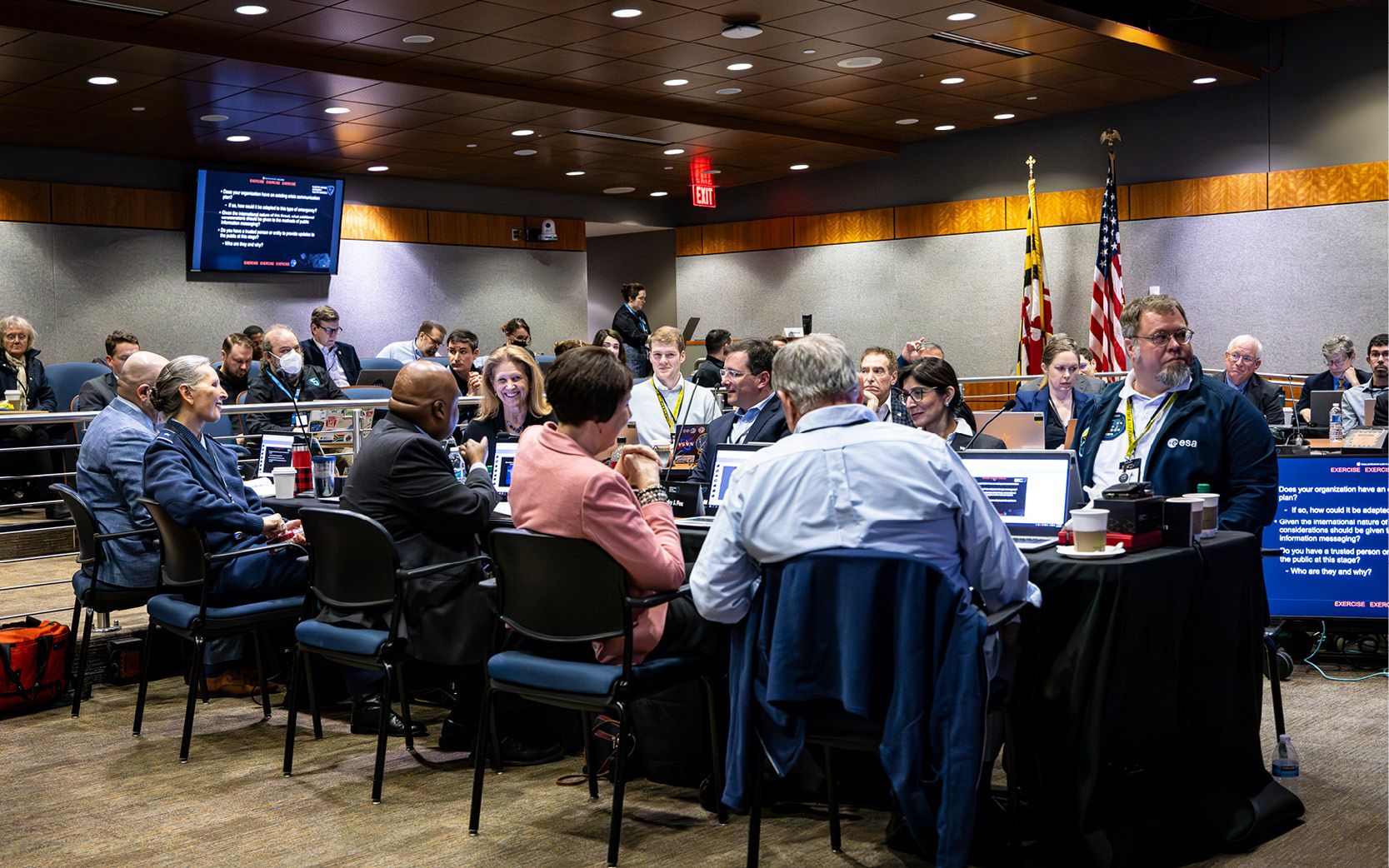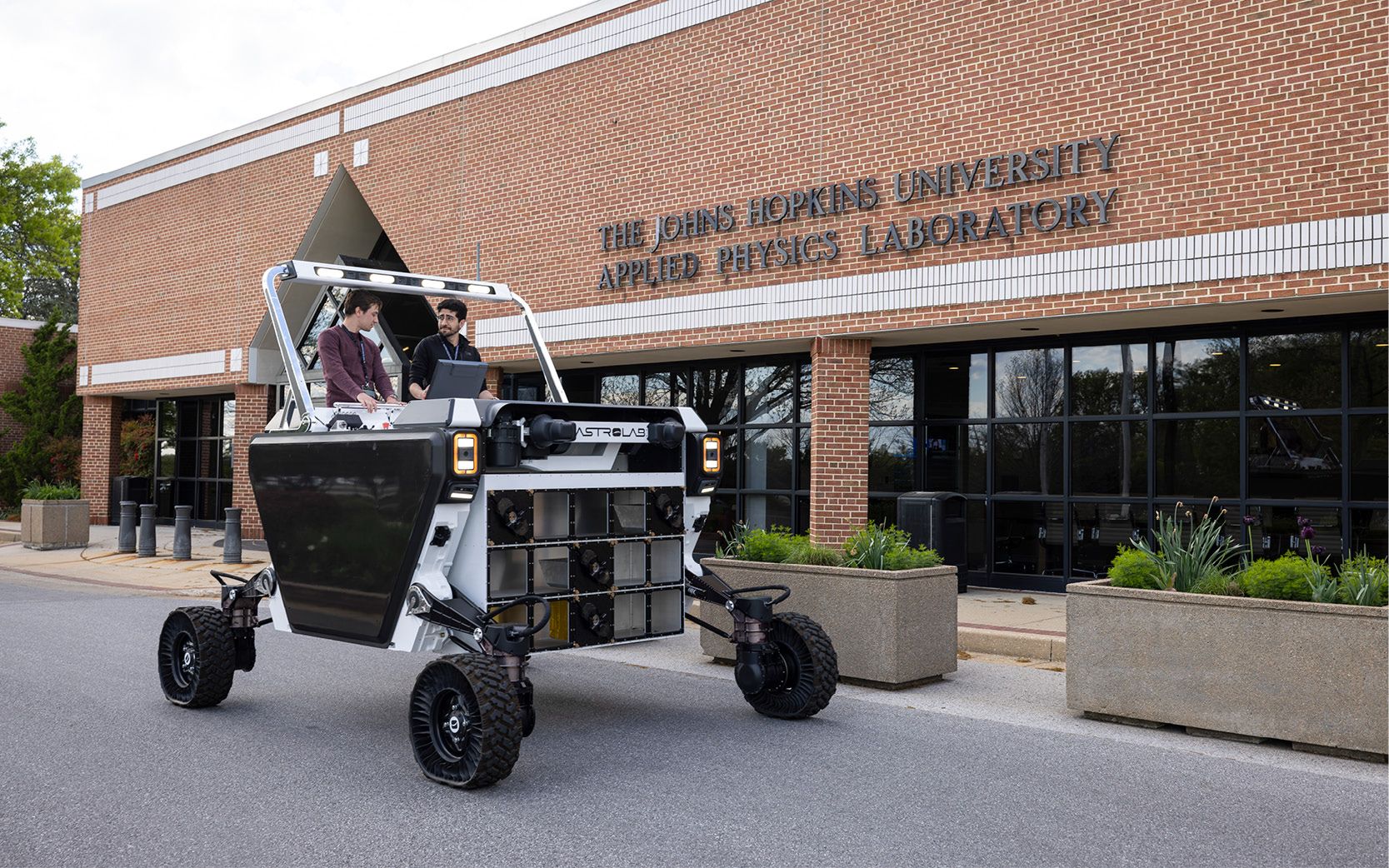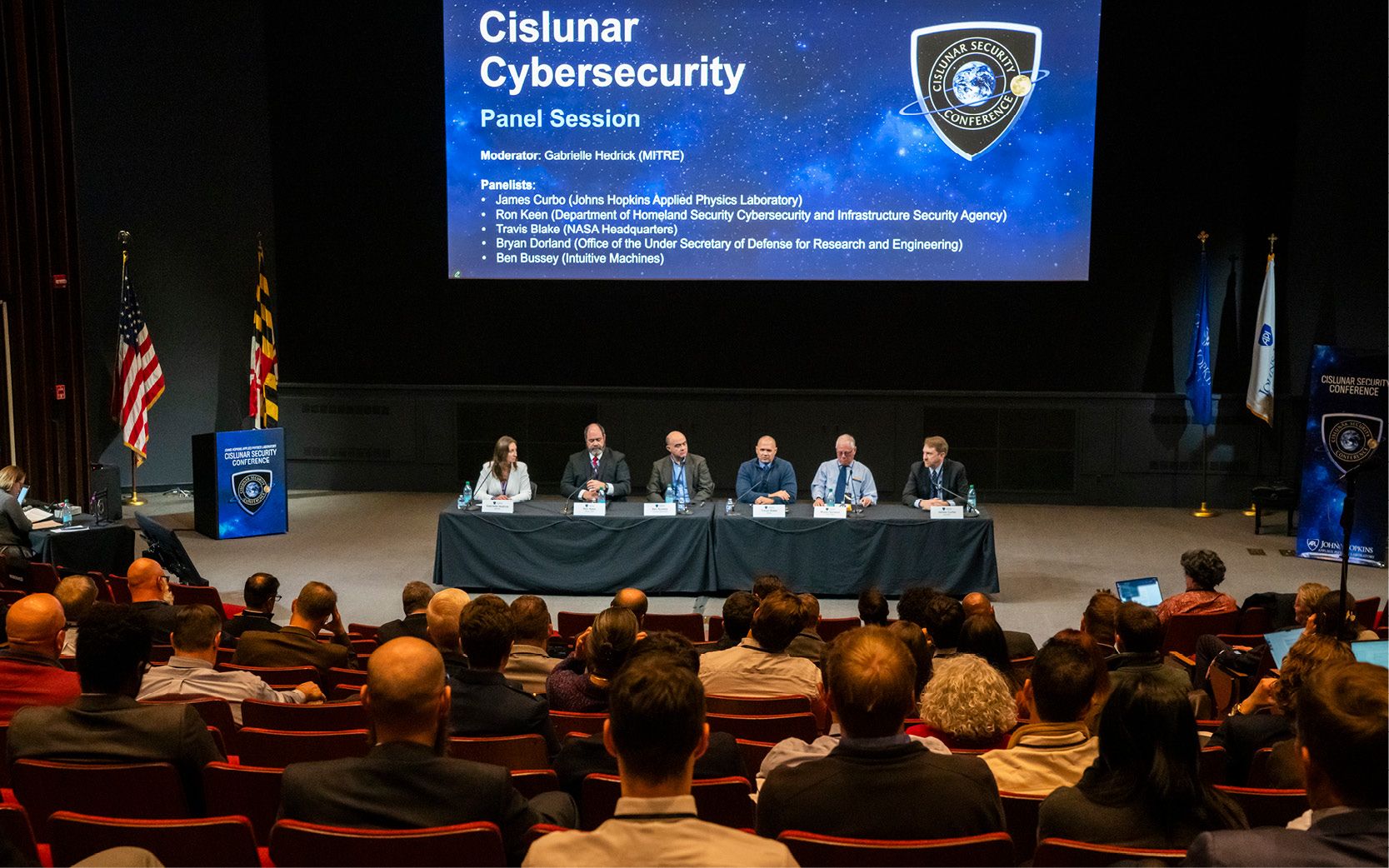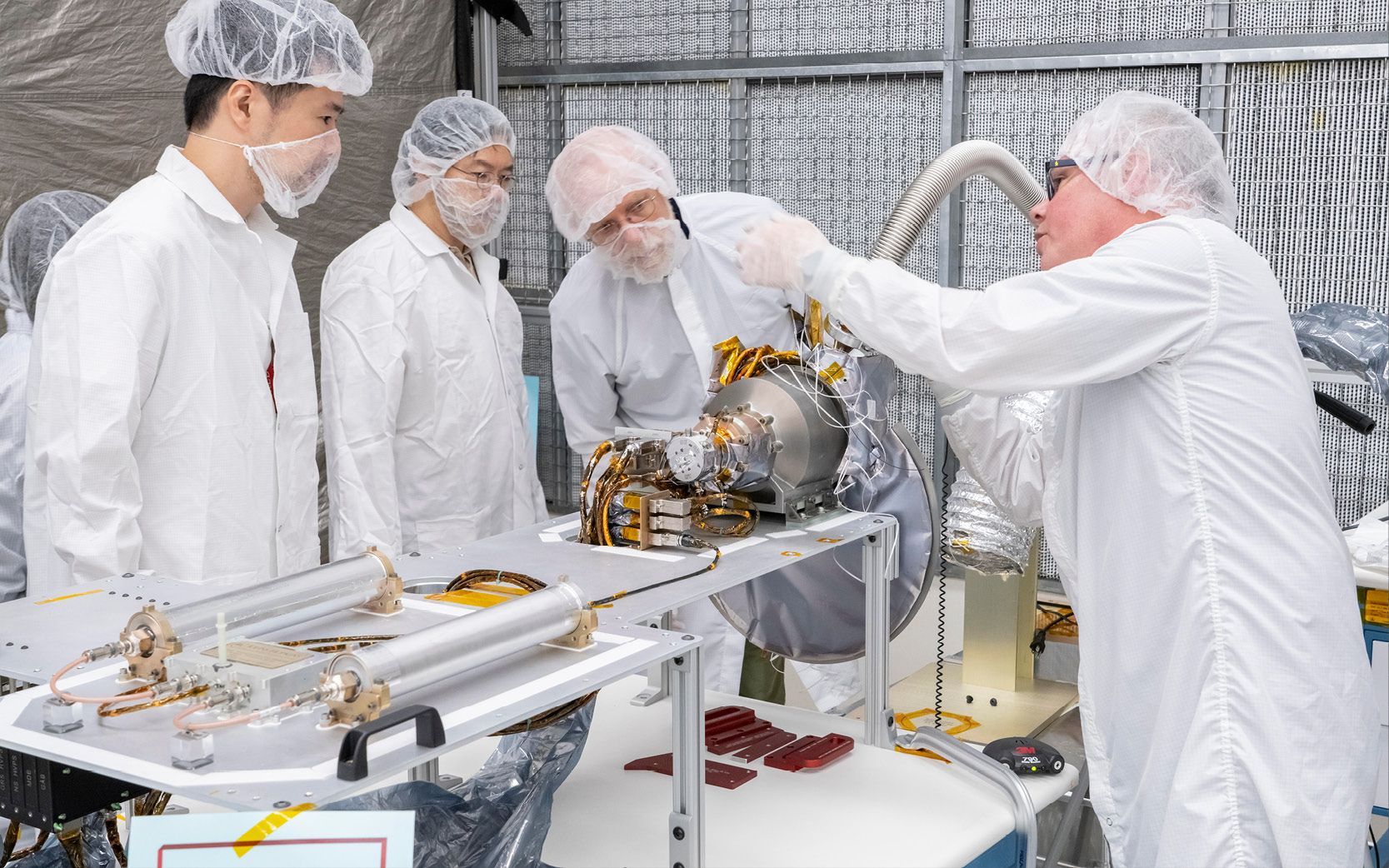Untangling the Mysteries of Our Solar System
As much as a robotic spacecraft can, Parker Solar Probe personifies APL’s drive to explore uncharted territory. Through six years in space, the historic probe has survived a hostile environment to deliver unprecedented data about the immediate solar atmosphere — and fundamentally change how we understand our star.
The spacecraft, which APL built and operates, accomplished a major milestone on Dec. 24 when it sped a mere 3.8 million miles (6.1 million kilometers) from the Sun’s blazing surface. Just how close is that? If the distance between Earth and the Sun were the length of a football field, the spacecraft would be around 4 yards from the end zone.
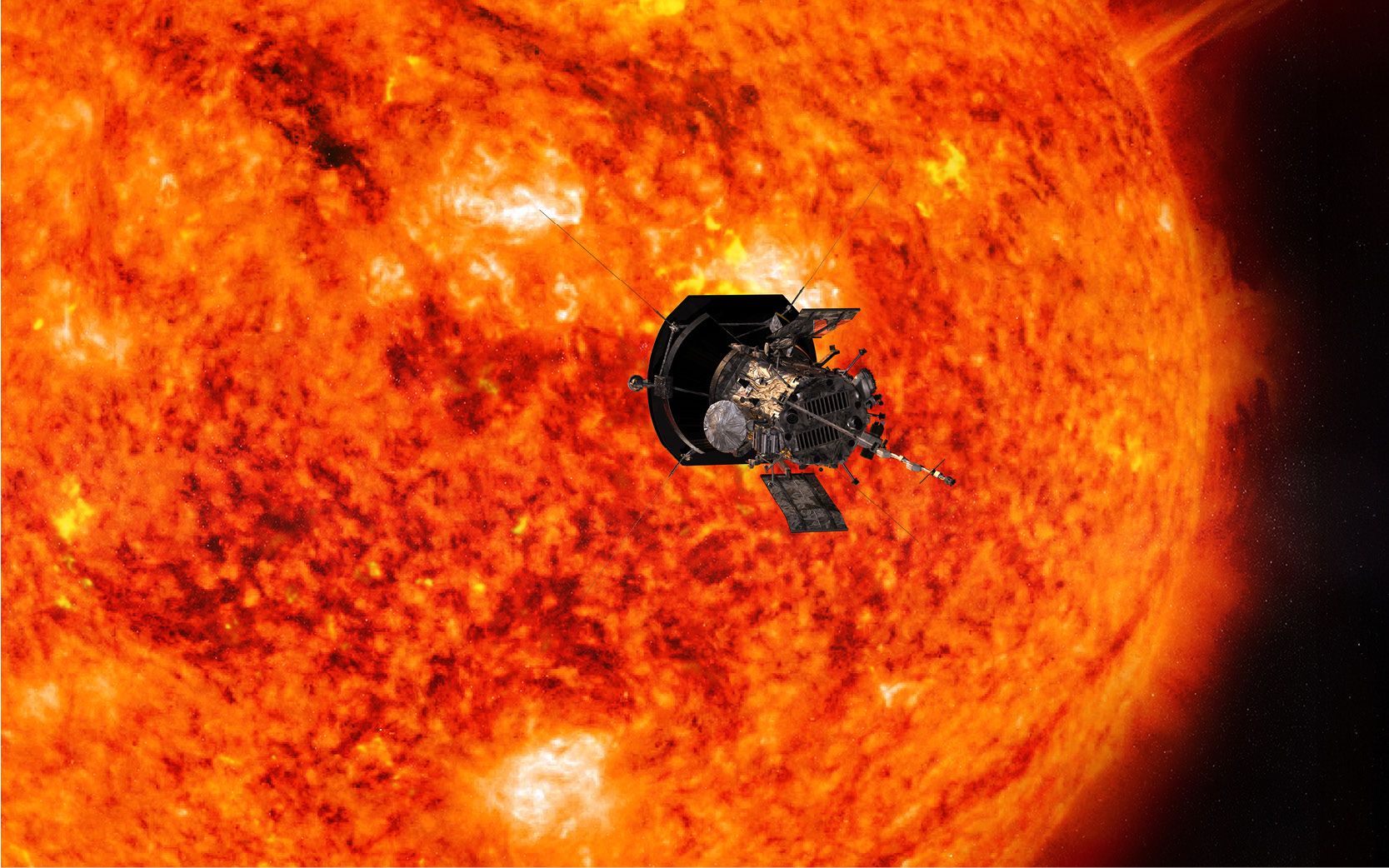
Through six years in space, Parker Solar Probe has survived intense temperatures, dust and radiation to deliver data that has transformed our understanding of the Sun. Credit: NASA/Johns Hopkins APL
Parker will continue to execute flybys, at about the same distance and speed, with several scheduled throughout 2025.
Parker’s orbit was designed to get progressively closer to the Sun to help scientists answer the toughest questions: What heats the corona to over 300 times the solar surface temperature? How is solar wind generated and accelerated to permeate the heliosphere? And how does explosive solar activity energize particles to nearly the speed of light and drive space weather? Now that Parker is at its closest, observations are filling in some of the last missing pieces of these solar puzzles — while sparking questions for future missions to answer and mysteries for the next generations of scientists to solve.
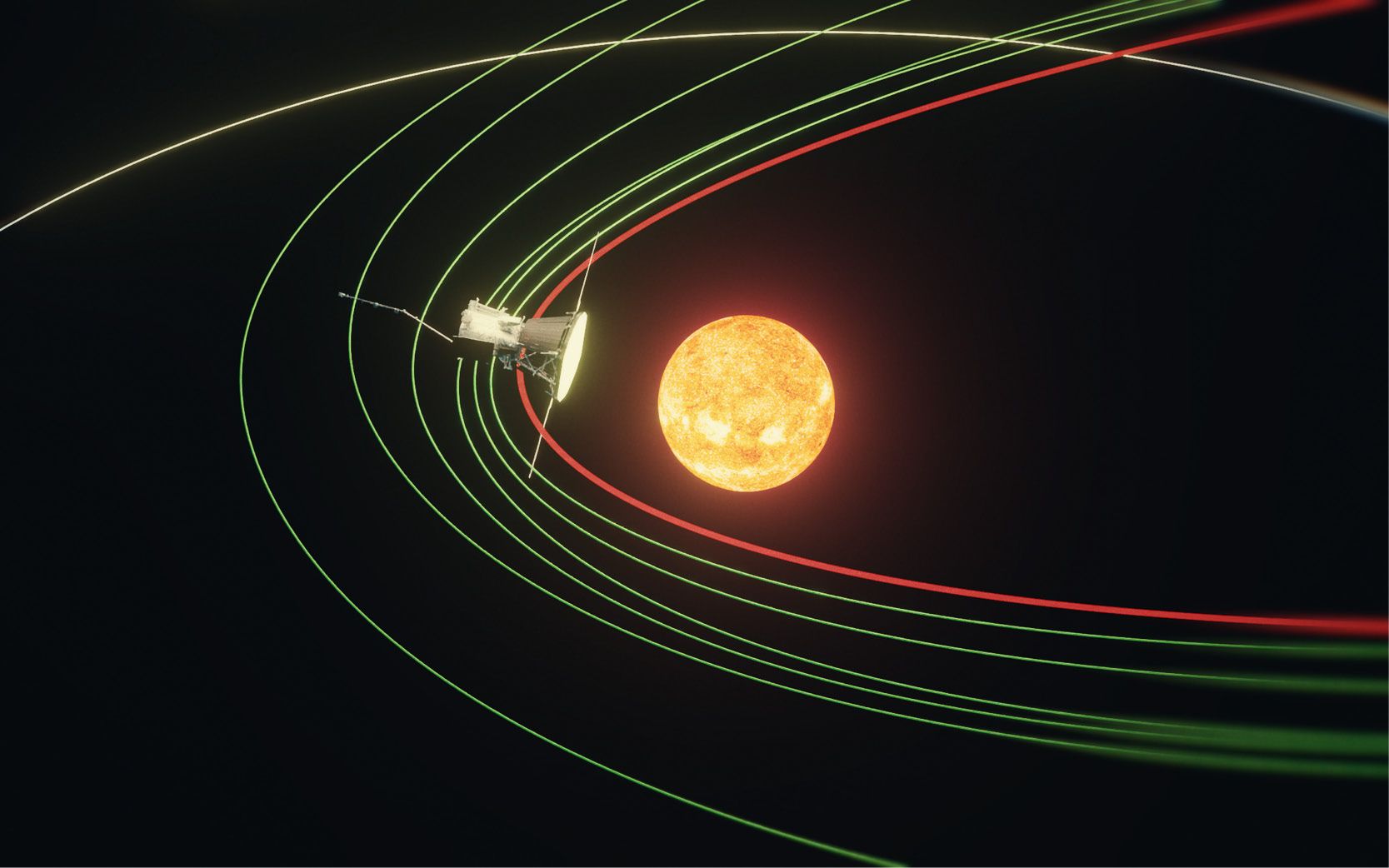
Parker Solar Probe’s voyage to the Sun — which included seven orbit-shaping gravity-assist maneuvers around Venus — culminates with passes just 3.8 million miles from the solar surface (artist rendering).
The spacecraft also uncovered new information on the zodiacal cloud, a vast dusty cloud surrounding the Sun that carries essential information on earlier comets and asteroids, resolving the nearly century-old question of dust-free zones around stars.
“Flying through the Sun’s atmosphere is a historic and daring milestone, marking a monumental leap for science. Parker Solar Probe is unraveling enduring solar mysteries, uncovering astonishing phenomena and redefining our understanding of the Sun and its influence across the solar system — a true beacon of a new golden age in space exploration,” said Nour Rawafi, project scientist for Parker Solar Probe at APL.
Equally ambitious is Dragonfly, the revolutionary small-car-sized, nuclear-powered rotorcraft that was officially confirmed by NASA in April 2024 to study Saturn’s moon Titan. The decision allows the mission team to complete its designs and begin to build and test the spacecraft and its science instruments.
After launch in 2028 and a roughly six-year interplanetary journey, Dragonfly will fly between dozens of landing sites across Titan’s surface in a search for compounds of prebiotic chemistry that advance our understanding of the chemical origins of life. Sampling areas on Titan where organic materials may have mixed with liquid water at the moon’s surface, this revolutionary mission will achieve critical planetary science and astrobiology objectives while advancing aeronautics and exploration technology.
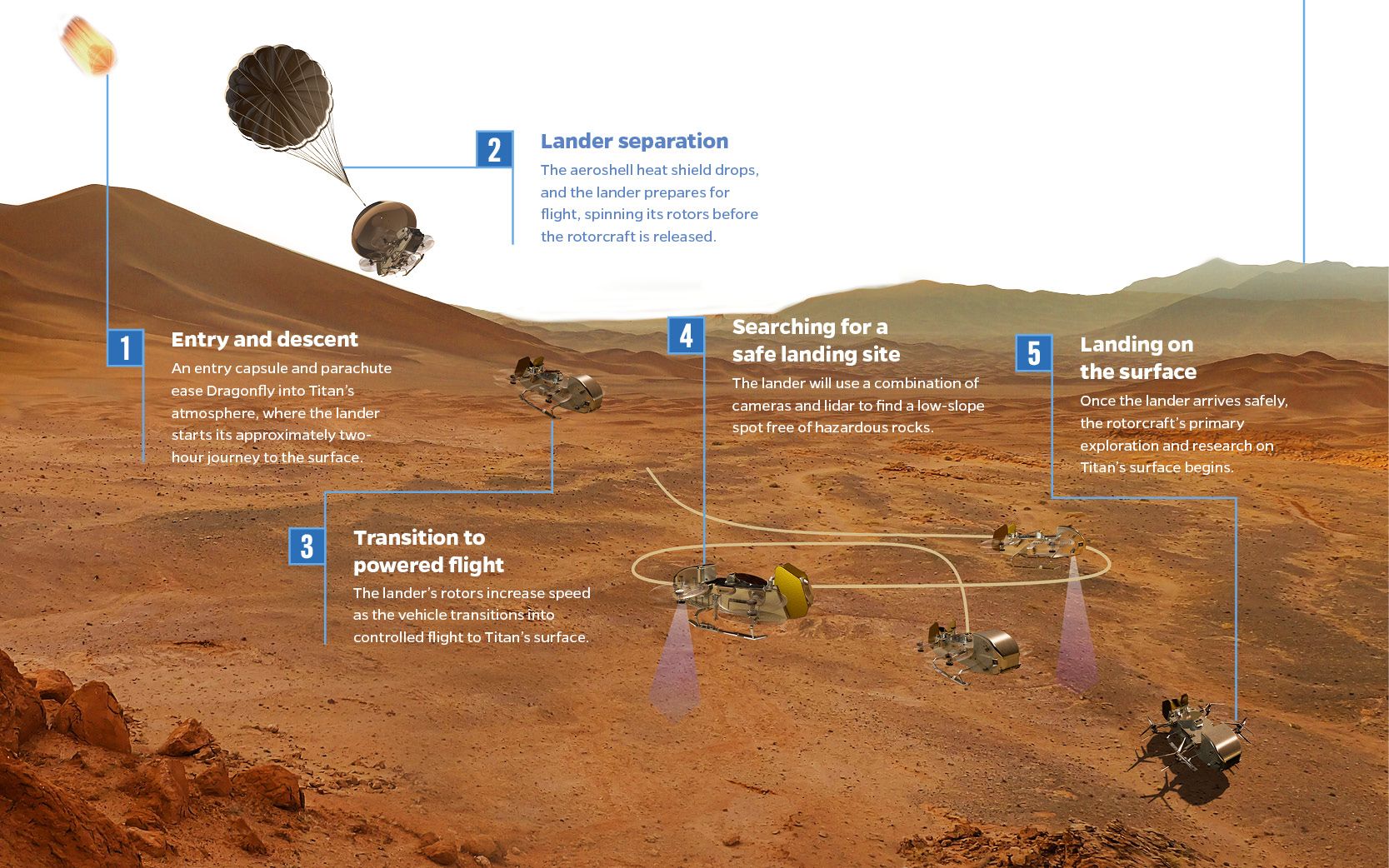
Credit: NASA/Johns Hopkins APL
“The Dragonfly mission is an incredible opportunity to explore an ocean world in a way that we have never done before,” said Dragonfly Principal Investigator Elizabeth “Zibi” Turtle of APL. “The team is dedicated and enthusiastic about accomplishing this unprecedented investigation of the complex carbon chemistry that exists on the surface of Titan and the innovative technology bringing this first-of-its-kind space mission to life.”
The APL team that has designed and will build the rotorcraft lander is part of a larger industry–government team managed by APL. The Lab has also built a large Titan environment chamber that has completed commissioning and is being used to ensure the rotorcraft will survive and thrive under Titan’s surface conditions.
The Dragonfly team will also be watching its ocean-world exploration predecessor — NASA’s Europa Clipper, which launched in 2024 — closely. Europa Clipper is the first mission dedicated to conducting a detailed study of a world that likely harbors a salty ocean with twice as much water as Earth beneath its icy crust. Targeting Jupiter’s icy moon Europa, the mission — built in partnership between APL and NASA’s Jet Propulsion Laboratory — aims to study the moon’s composition, geology and interior to understand whether it harbors the water, chemistry and energy to support life.
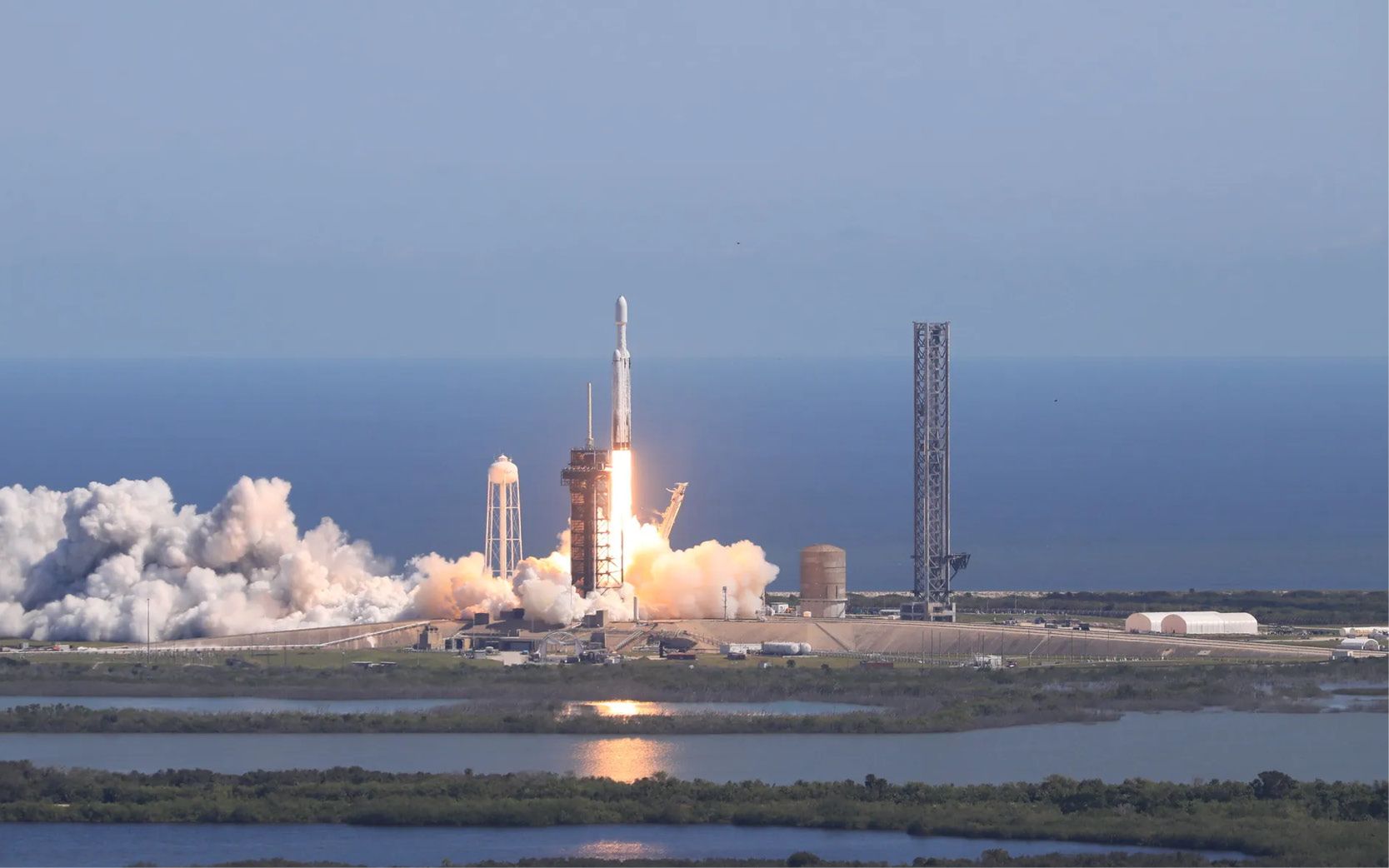
A SpaceX Falcon Heavy rocket carrying NASA’s Europa Clipper spacecraft lifts off from Launch Complex 39A at NASA’s Kennedy Space Center in Florida at 12:06 p.m. EDT on Oct. 14. Credit: NASA/Kim Shiflett
Among several contributions to the spacecraft design, test and integration phases of the mission, APL built Europa Clipper’s propulsion module and communications system, and delivered — and will operate — the spacecraft’s plasma instrument, both cameras (including the most powerful camera ever slated for the outer solar system) and portions of the imaging spectrometer.
A signature component of the spacecraft is its massive solar array wings. Managed by APL and designed and engineered by Airbus Netherlands B.V., each solar array measures 13.5 feet (4.1 meters) wide and 46.5 feet (14.2 meters) long. Put end to end, they stretch just shy of the length of a basketball court — the largest arrays NASA has ever developed for a planetary mission.








